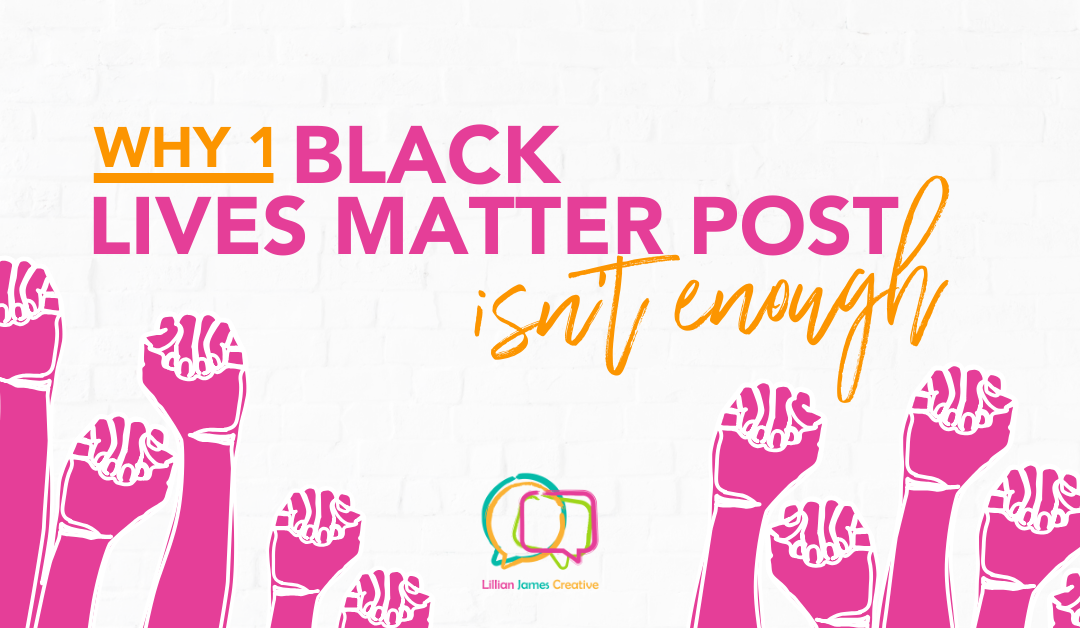Today’s consumers expect more than words. Followers are watching the moves of their favorite brands and they won’t sacrifice their values to make a purchase. They have options and they make choices based on what means the most to them. In protest of the death of George Floyd, and the others before him, brands are surfacing with words in support of the Black Lives Matter movement. But is that enough? Companies are being accused of hypocrisy, their words are being challenged, and consumers are demanding more than a one-off post that tastes like a marketing stunt.
Authenticity
Like many other companies and individuals, Ben & Jerry’s quickly responded to the news of George Floyd’s death. The ice cream company posted on social media, and developed a full statement on their website, “Silence is NOT an option,” which details 4 call-to-actions in support of the movement. So what’s different about B-Corp Certified Ben & Jerry’s? Their track record of mixing purpose and profit. They publicly stated their support for the Black Lives Matter movement four years ago. A 2016 website post says, “it’s become clear to us at Ben & Jerry’s that we have a moral obligation to take a stand now for justice and for Black lives.” More recently, Ben and Jerry’s was one of the first major companies that explicitly showed support for defunding the police in a Juneteenth social media message. Do you have the history of support like Ben & Jerry’s does? Followers, consumers, and potential customers are looking at what you have historically stood for and if your hashtags today match with your words from yesterday.
Representation
While companies large and small are taking a stance and flexing their activism muscles, followers can’t help but to look behind their office walls. Campaigns are emerging to boycott companies that are not showing diversity and inclusion as enough of a priority. Even Nike, who took a stance in 2018 with a bold Colin Kaepernick ad has even been criticized. Kaepernick is known for taking a knee during the national anthem before a 2016 football game in protest against police brutality. Nike continued the “controversy” by choosing him as one of the faces of their 30th anniversary ad campaign. Looking past their strong and supportive campaigns, their company diversity was brought into question as 2019 public records showed that less than 10% of its 300+ vice presidents were black. This kind of thing is happening at all levels, in all industries. For example, Sharon Chuter, a Nigerian-born former executive in the beauty industry, launched the campaign Pull Up or Shut Up, which challenges beauty brands to disclose the number of black people working for them at an executive level, and asking the public not to buy from the ones who choose not to share or who have low numbers. Who is sitting at your table? Does your boardroom represent your city? Consumers, now more than ever, are expecting your internal efforts to match your external social media posts.
Action
Your consumers are demanding action. Followers have made it clear that they are not willing to stay with a brand who doesn’t have the same values that they do, and who doesn’t utilize their platform to make a change. Bank of America promised to spend $1 billion over the next four years to address inequality and racism. Google has committed $12 million to fight anti-racism, and both Facebook and Amazon are donating $10 million to various groups that fight against racial injustice. Apple has pledged $100 million to go toward a new Racial Equity and Justice Initiative and Walmart also announced that it will contribute $100 million over five years to create a new center for racial equity. Companies like Twitter are making Juneteenth an observed company holiday and Aunt Jemima is getting a new name and image. Lego called for all marketing of police-related products to be removed, Walmart pledged to stop locking up “multicultural” hair and beauty products in display cases, and Sephora committed to devoting at least 15% of its shelf space to black-owned beauty brands.
Ernest Hemingway is quoted as saying “Never mistake motion for action.” Is your brand speaking up about issues that matter to your audience? Is that followed by action, or just motion? Followers are looking. They’re looking to see if their brands fund politicians and legislators who receive low grades from the NAACP, and they’re yelling “Open your purse!”
The fact is that one social media post isn’t enough. Not even two will do it. April Reign, creator of the #OscarsSoWhite campaign, says that “it has to start from within.” Now is not the time for brands to stay silent and remain neutral so that they don’t upset a portion of their customer base. Now is not that time.
It’s not about the single black square on Instagram. While it is seen as a symbol of solidarity and support, without action behind it, it is void of meaning.
It’s time to review internal efforts, scrutinize branding, and analyze unconscious bias at every level. Is your brand doing more than one social media post? How is your content reflecting your values?
For more information about the Black Lives Matter movement, and how to take action, visit blacklivesmatter.com.

